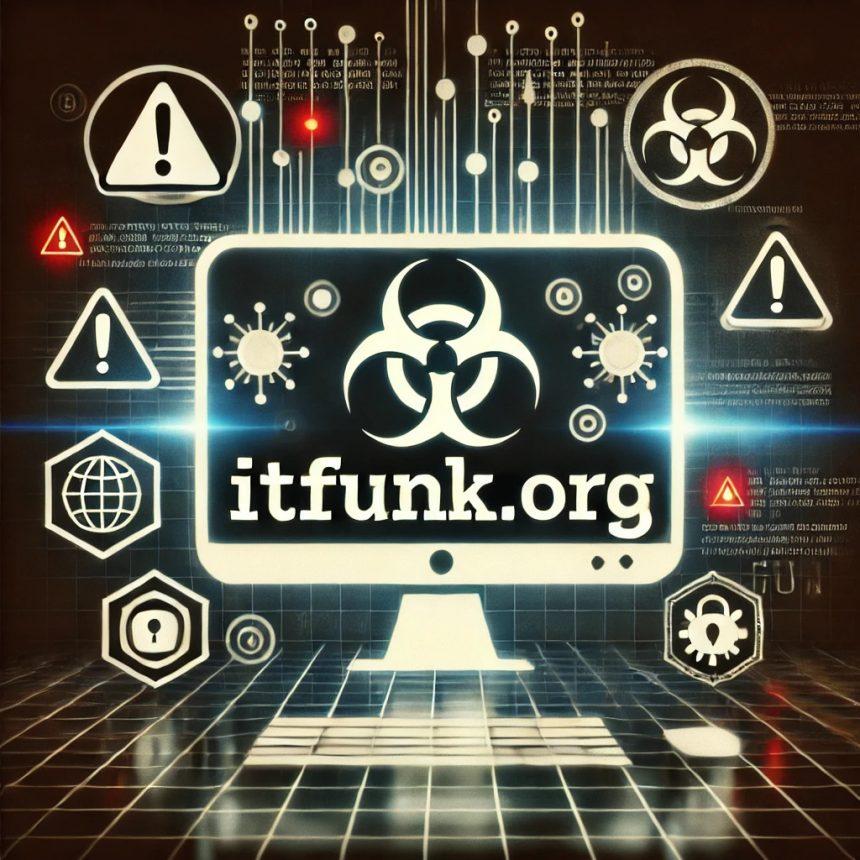Helldown is an aggressive ransomware strain first identified in August 2024. It operates using double extortion tactics, encrypting victims’ data while simultaneously exfiltrating an average of 70GB of sensitive files per victim. If the ransom is not paid, the attackers threaten to release the stolen data publicly.
Helldown ransomware targets both Windows and Linux systems and has been associated with exploiting vulnerabilities in network firewalls. It is particularly notorious for its customized attack strategies, including virtual machine disruption on Linux servers.
Helldown Ransomware Summary
| Aspect | Details |
|---|---|
| Threat Type | Ransomware, Cryptovirus |
| Encrypted File Extension | Randomly generated combination of characters |
| Ransom Note File Name | Readme.[random_string].txt |
| Associated Email | helldown@onionmail.org |
| Detection Names | May vary by antivirus tools; examples include “Ransom:Win32/Helldown” or “Linux.Helldown.A” |
| Symptoms of Infection | Encrypted files, altered file extensions, ransom note dropped in affected directories |
| Damage | Data encryption, data exfiltration, backup deletion, virtual machine disruption |
| Distribution Methods | Exploited vulnerabilities, phishing emails, malicious attachments, torrent websites |
| Danger Level | Critical |
Technical Overview of Helldown Ransomware
Windows Variant
File Name: hellenc.exe
Behavior:
- Encrypts files with a unique extension.
- Alters Volume Shadow Copy Service (VSS) settings to hinder recovery.
- Drops files such as
1.batandxx.icoin theC:\ProgramDatadirectory. - Leaves a ransom note containing instructions to contact the attackers via Tor and email.
Linux Variant
File Name: 64-bit ELF executable.
Behavior:
- Targets VMware ESXi servers.
- Encrypts files after shutting down virtual machines.
- Generates a ransom note on the infected system.
Exploitation Methods
Helldown leverages vulnerabilities in network devices, such as CVE-2024-42057 in Zyxel firewalls, to gain access and establish footholds. Once inside, it creates unauthorized accounts and uploads malicious files, paving the way for broader network compromise.
Impact of Helldown Ransomware
Victim Statistics
- Victim Count: 31 as of November 2024.
- Sectors Affected: Transportation, healthcare, manufacturing, telecommunications, IT services.
- Regions Targeted: Predominantly small and medium-sized businesses in the United States and Europe.
Notable Breach
Zyxel Networks reported a significant attack, with 253GB of sensitive data exfiltrated by Helldown ransomware, underscoring the group’s ability to compromise even prominent cybersecurity firms.
Removing Helldown Ransomware
Remove annoying malware threats like this one in seconds!
Scan Your Computer for Free with SpyHunter
Download SpyHunter now, and scan your computer for this and other cybersecurity threats for free!
To remove Helldown ransomware and mitigate damage, follow these steps:
Step 1: Disconnect from the Network
- Immediately isolate the infected system from the network.
- Disable Wi-Fi and unplug Ethernet cables to prevent the ransomware from spreading.
Step 2: Boot into Safe Mode
- Restart the computer.
- Enter Safe Mode by pressing the appropriate key (e.g., F8) during startup.
- Choose “Safe Mode with Networking” to facilitate software downloads.
Step 3: Use SpyHunter to Remove Helldown
- Download and install SpyHunter from a trusted source.
- Perform a full system scan to detect Helldown ransomware components.
- Follow the on-screen instructions to remove the ransomware completely.
Step 4: Restore Encrypted Files
- Restore files from a secure backup if available.
- Use ransomware decryption tools or consult data recovery specialists if backups are unavailable.
Preventing Future Infections
To avoid future infections by Helldown or similar ransomware threats, implement the following measures:
Regular Software Updates
Keep operating systems, firewalls, and other software updated to patch known vulnerabilities.
Employ Robust Security Solutions
- Use reputable antivirus software and enable real-time protection.
- Regularly scan systems for potential threats.
Back Up Data
- Maintain secure, offline backups of critical files.
- Test backups periodically to ensure their integrity.
Strengthen Email Security
- Educate employees on recognizing phishing emails.
- Implement spam filters and block attachments from untrusted sources.
Network Security Best Practices
- Regularly audit and update firewall settings.
- Disable unused ports and services.
- Use strong, unique passwords for all accounts.
Limit Permissions
Apply the principle of least privilege (PoLP) to restrict access to sensitive systems and files.
By understanding Helldown ransomware and taking proactive steps to secure systems, you can minimize the risk of future attacks and ensure data integrity. Employing tools like SpyHunter, along with regular backups and updates, creates a robust defense against evolving cyber threats.
Remove annoying malware threats like this one in seconds!
Scan Your Computer for Free with SpyHunter
Download SpyHunter now, and scan your computer for this and other cybersecurity threats for free!





